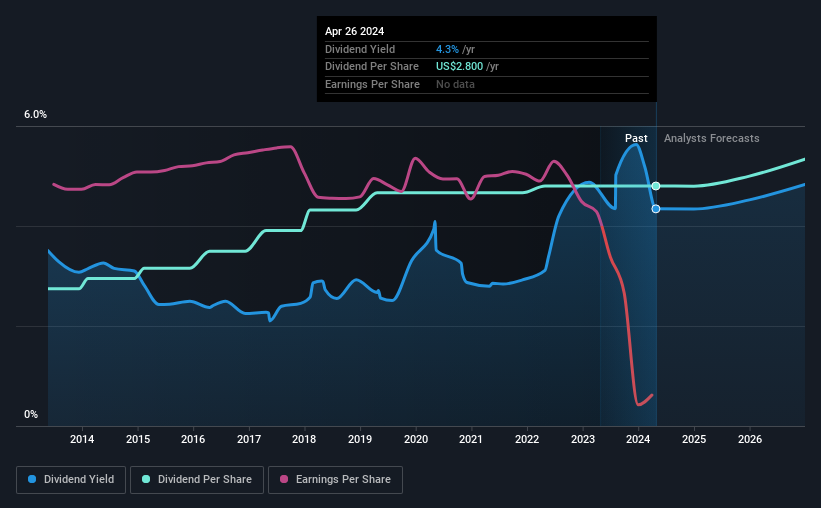Don't Buy Hasbro, Inc. (NASDAQ:HAS) For Its Next Dividend Without Doing These Checks
Hasbro, Inc. (NASDAQ:HAS) is about to trade ex-dividend in the next two days. The ex-dividend date is usually set to be one business day before the record date which is the cut-off date on which you must be present on the company's books as a shareholder in order to receive the dividend. The ex-dividend date is important as the process of settlement involves two full business days. So if you miss that date, you would not show up on the company's books on the record date. Meaning, you will need to purchase Hasbro's shares before the 30th of April to receive the dividend, which will be paid on the 15th of May.
The company's upcoming dividend is US$0.70 a share, following on from the last 12 months, when the company distributed a total of US$2.80 per share to shareholders. Based on the last year's worth of payments, Hasbro has a trailing yield of 4.3% on the current stock price of US$64.47. Dividends are an important source of income to many shareholders, but the health of the business is crucial to maintaining those dividends. So we need to check whether the dividend payments are covered, and if earnings are growing.
View our latest analysis for Hasbro
Dividends are usually paid out of company profits, so if a company pays out more than it earned then its dividend is usually at greater risk of being cut. Hasbro's dividend is not well covered by earnings, as the company lost money last year. This is not a sustainable state of affairs, so it would be worth investigating if earnings are expected to recover. Considering the lack of profitability, we also need to check if the company generated enough cash flow to cover the dividend payment. If cash earnings don't cover the dividend, the company would have to pay dividends out of cash in the bank, or by borrowing money, neither of which is long-term sustainable. It paid out more than half (63%) of its free cash flow in the past year, which is within an average range for most companies.
Click here to see the company's payout ratio, plus analyst estimates of its future dividends.
Have Earnings And Dividends Been Growing?
Businesses with shrinking earnings are tricky from a dividend perspective. If earnings fall far enough, the company could be forced to cut its dividend. Hasbro was unprofitable last year and, unfortunately, the general trend suggests its earnings have been in decline over the last five years, making us wonder if the dividend is sustainable at all.
Many investors will assess a company's dividend performance by evaluating how much the dividend payments have changed over time. Hasbro has delivered 5.8% dividend growth per year on average over the past 10 years.
We update our analysis on Hasbro every 24 hours, so you can always get the latest insights on its financial health, here.
Final Takeaway
From a dividend perspective, should investors buy or avoid Hasbro? We're a bit uncomfortable with it paying a dividend while being loss-making. However, we note that the dividend was covered by cash flow. It's not an attractive combination from a dividend perspective, and we're inclined to pass on this one for the time being.
With that in mind though, if the poor dividend characteristics of Hasbro don't faze you, it's worth being mindful of the risks involved with this business. Our analysis shows 2 warning signs for Hasbro and you should be aware of these before buying any shares.
A common investing mistake is buying the first interesting stock you see. Here you can find a full list of high-yield dividend stocks.
Have feedback on this article? Concerned about the content? Get in touch with us directly. Alternatively, email editorial-team (at) simplywallst.com.
This article by Simply Wall St is general in nature. We provide commentary based on historical data and analyst forecasts only using an unbiased methodology and our articles are not intended to be financial advice. It does not constitute a recommendation to buy or sell any stock, and does not take account of your objectives, or your financial situation. We aim to bring you long-term focused analysis driven by fundamental data. Note that our analysis may not factor in the latest price-sensitive company announcements or qualitative material. Simply Wall St has no position in any stocks mentioned.

 Yahoo Finance
Yahoo Finance 
